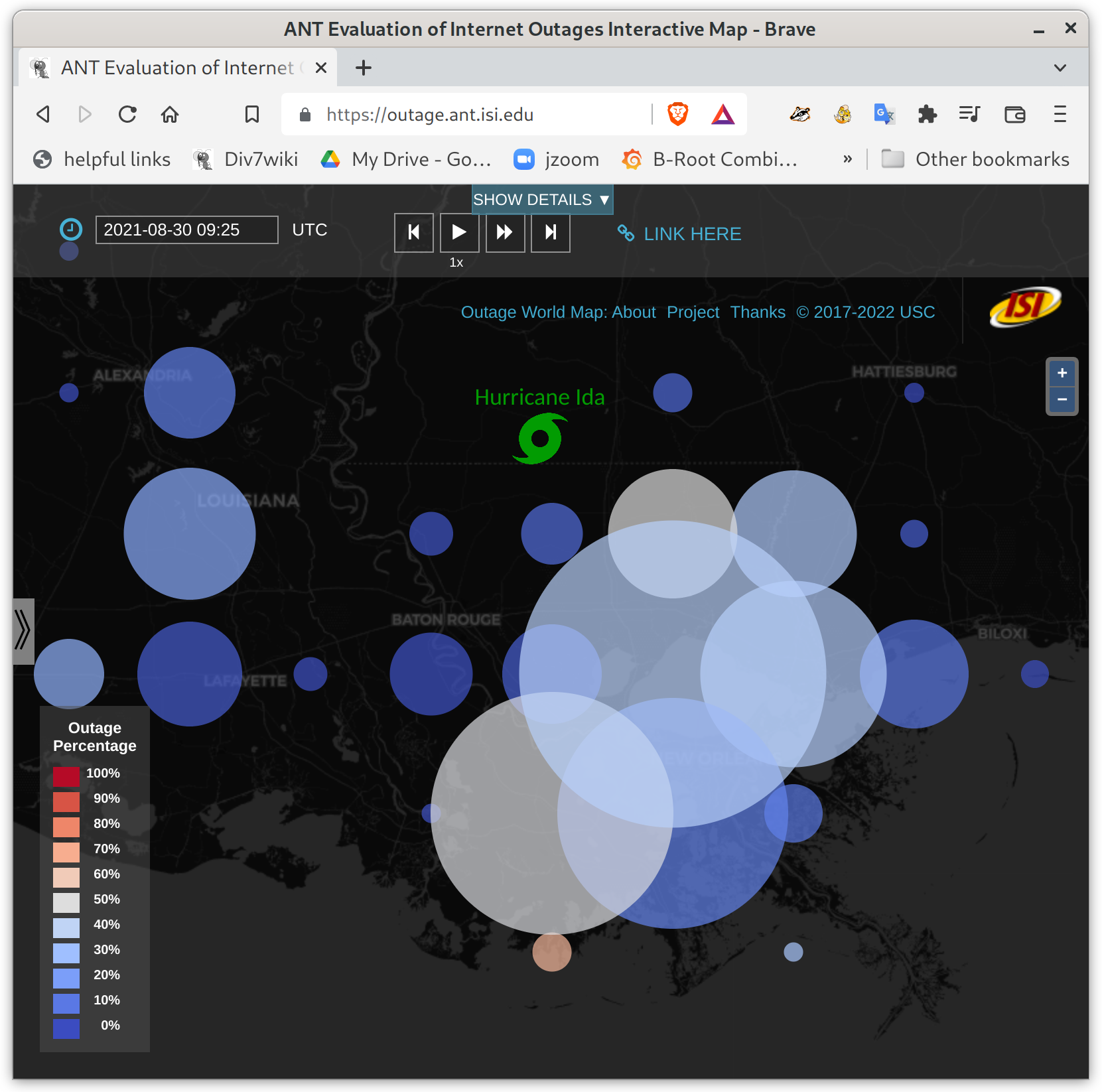Evaluation of Hurricane Ida in 2021 on the Internet's Edge
On August 29, 2021 Hurricane Ida made landfall in Louisana, causing widespread power outages there, and eventually flooding in the Northeastern United States.
Here we evaluate what outages in the edge networks Internet can say about damage on the ground.
Summary Of Results
What We See: We were able to see the effects of Hurricane Ida on the Internet through our Trinocular outage detection system.

We see that landfall was followed by widespread Internet outages in southern Louisana, with up to half of home networks dropping off the Internet in some rural areas.
We could watch the storm move across the U.S., and we see outage sin the New York area three days later (night, Wed. Sept. 1, or 3:00 UTC Sept. 2). Although only a few percent of networks in NYC went down, this
Why Does This Matter? Hurricane Ida is another example where we see the impact of a hurricane on edge networks of the Internet. Outages in edge networks reflect people’s homes losing utilities and power–therefore we can use the Internet to infer storm damage on people’s lives.
Observations about Internet outages due to storm damages provide unique details about the geographic scope and seriousness of damage. Our inferences can complement other sources of information. News reporters and people on the scene put a human face on how the hurricane affects individuals. But our quantitative measurements of storm damage can help first responders understand where problems are occurring before people call in, and for neighborhoods that have lost communications. Utilities will report on service outages, but during the event they are busy restoring services, so formal reports often follow days later.
Where From Here? We are working to improve our approaches, and we expect to provide near-real time reporting of Internet outages in the coming year.
How Did We Get Here? Our work is supported by the Department of Homeland Security, Science and Technology Directorate, Cyber Security Division through the IMAM (Internet Measurement and Attack Modeling) program (analysis and algorithm development), and the IMPACT (Information Marketplace for Policy and Analysis of Cyber-risk and Trust) program (basic outage data collection and distribution), through a Michael Keston Research Grant at USC/ISI. We are also collaborating with the FCC to evaluate if our work can complement DIRS, to improve assessment of U.S. telecommunications during disasters.
![[ANT logo]](../../../images/logos/ant_logo_1_128px.png)